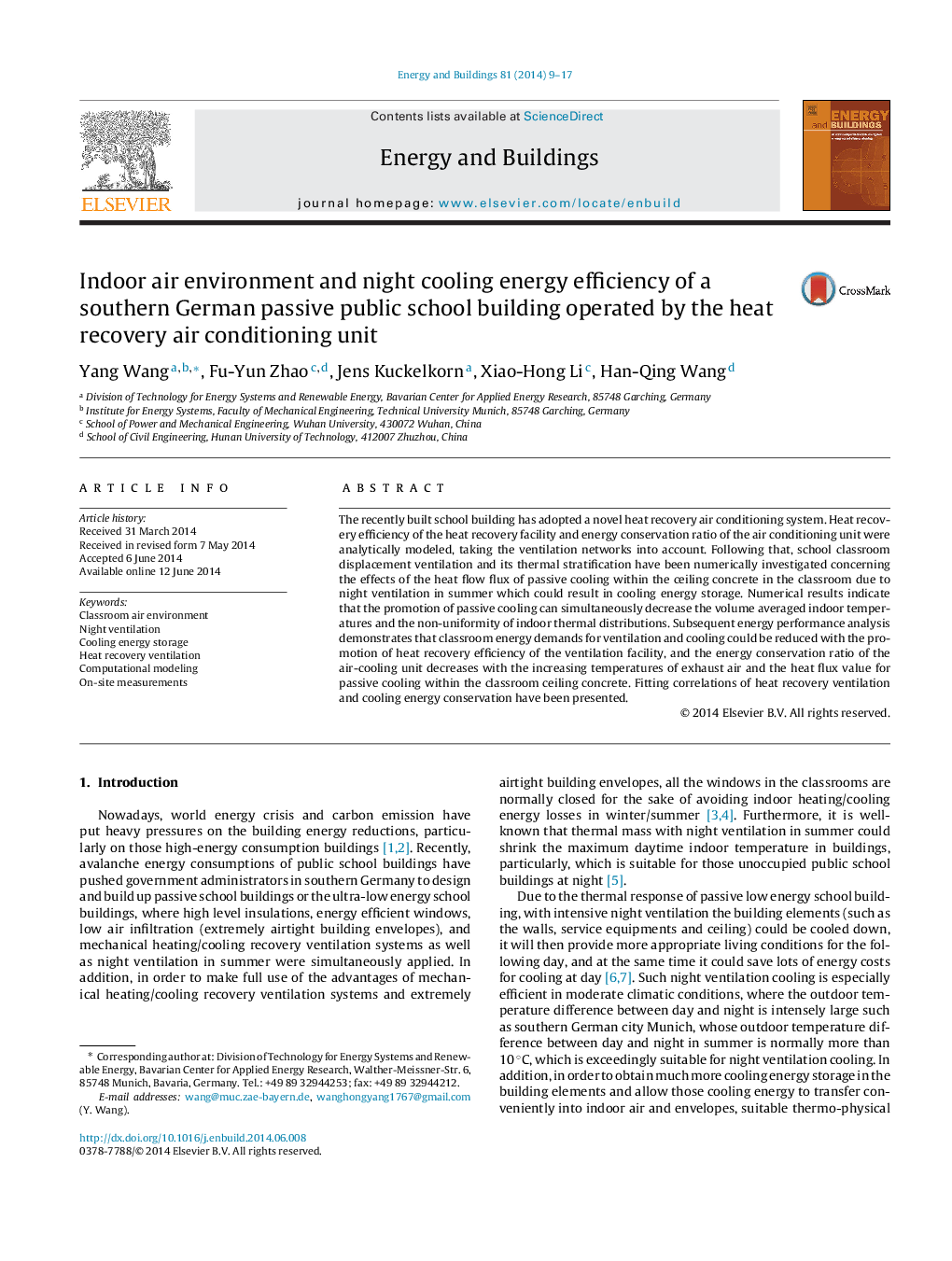| Article ID | Journal | Published Year | Pages | File Type |
|---|---|---|---|---|
| 262811 | Energy and Buildings | 2014 | 9 Pages |
•Classroom air environment influenced by heat recovery air-cooling unit.•School building energy and classroom environment jointly solved by theory and CFD.•Effect of passive night cooling on airflow pattern and thermal comfort.•Detailed correlations of heat recovery ventilation and cooling energy conservation.•Enhancement of classroom environment with reduction of school building energy.
The recently built school building has adopted a novel heat recovery air conditioning system. Heat recovery efficiency of the heat recovery facility and energy conservation ratio of the air conditioning unit were analytically modeled, taking the ventilation networks into account. Following that, school classroom displacement ventilation and its thermal stratification have been numerically investigated concerning the effects of the heat flow flux of passive cooling within the ceiling concrete in the classroom due to night ventilation in summer which could result in cooling energy storage. Numerical results indicate that the promotion of passive cooling can simultaneously decrease the volume averaged indoor temperatures and the non-uniformity of indoor thermal distributions. Subsequent energy performance analysis demonstrates that classroom energy demands for ventilation and cooling could be reduced with the promotion of heat recovery efficiency of the ventilation facility, and the energy conservation ratio of the air-cooling unit decreases with the increasing temperatures of exhaust air and the heat flux value for passive cooling within the classroom ceiling concrete. Fitting correlations of heat recovery ventilation and cooling energy conservation have been presented.
